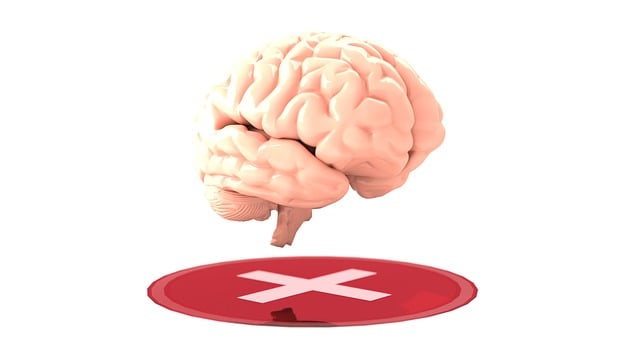Centennial Cognitive Processing Therapy (CCPT) is an evidence-based therapy that teaches individuals to manage emotions by understanding the link between thoughts, feelings, and behaviors. Through CCPT techniques, people can improve coping abilities, reduce impulsive reactions, and make better decisions in stressful situations or when dealing with difficult emotions. For mental health professionals, integrating CCPT with Risk Management Planning enhances therapeutic outcomes and client self-management. Educators can incorporate structured CCPT curricula into mental health education programs to promote emotional well-being across diverse backgrounds, fostering emotional awareness, empathy, mindfulness, and healthy coping mechanisms in students.
Emotion regulation is a vital skill, especially in today’s fast-paced world. This article explores the significance of teaching emotion regulation techniques and introduces Centennial Cognitive Processing Therapy (CCPT) as an effective approach. We delve into strategies for educators to implement, fostering students’ emotional intelligence and resilience. By understanding how CCPT targets cognitive processes, we can enhance our teaching methods, enabling folks to navigate life’s challenges with greater ease.
- Understanding Emotion Regulation and its Significance
- Exploring Centennial Cognitive Processing Therapy (CCPT)
- Implementing Effective Teaching Strategies for Emotion Regulation Techniques
Understanding Emotion Regulation and its Significance

Emotion regulation is a pivotal skill that enables individuals to navigate life’s challenges and maintain mental well-being. It involves understanding and managing one’s emotional responses, ensuring they are appropriate and proportional to various situations. This process is crucial for fostering resilience and adaptive coping strategies, especially in stressful environments or when facing difficult emotions. Centennial Cognitive Processing Therapy (CCPT) offers a comprehensive framework for teaching emotion regulation skills, emphasizing the connection between thoughts, feelings, and behaviors.
By learning effective emotion regulation techniques, individuals can enhance their ability to cope with adversity, reduce impulsive reactions, and make more thoughtful decisions. This is particularly relevant for mental health professionals who often work with clients struggling with emotional dysregulation. Implementing strategies such as those taught in CCPT, coupled with Risk Management Planning for Mental Health Professionals, can significantly improve therapeutic outcomes and client self-management. Additionally, Coping Skills Development and Communication Strategies play a vital role in helping individuals express their emotions constructively and build supportive relationships.
Exploring Centennial Cognitive Processing Therapy (CCPT)

Centennial Cognitive Processing Therapy (CCPT) is a therapeutic approach that focuses on helping individuals understand and manage their emotions through cognitive restructuring. This evidence-based therapy aims to promote emotional well-being by teaching clients to challenge and change unhelpful thought patterns and beliefs. CCPT incorporates various techniques, such as mindfulness exercises and problem-solving skills, to empower individuals in regulating their emotions effectively.
Designed with a holistic perspective, CCPT considers cultural aspects and adapts its strategies accordingly. This cultural competency training for healthcare providers is crucial in diverse mental health education programs. By incorporating CCPT, these programs can ensure that participants learn emotion regulation techniques tailored to their unique backgrounds, enhancing the overall effectiveness of emotional well-being promotion.
Implementing Effective Teaching Strategies for Emotion Regulation Techniques

In teaching emotion regulation techniques, educators play a pivotal role in helping students develop essential skills for managing their emotions effectively. A structured and engaging curriculum is key to success. One proven approach is integrating Centennial Cognitive Processing Therapy (CCPT), which focuses on challenging negative thought patterns and replacing them with more adaptive ones. By incorporating CCPT into lessons, teachers can guide students to understand the connection between thoughts, feelings, and behaviors, fostering a deeper sense of emotional awareness.
Additionally, complementing CCPT with Empathy Building Strategies, Mindfulness Meditation, and Conflict Resolution Techniques broadens the toolkit for emotion regulation. These strategies encourage self-reflection, emotional intelligence, and healthy coping mechanisms. For instance, teaching mindfulness meditation can help students cultivate present-moment awareness, enabling them to respond calmly in emotionally charged situations. Equally important, conflict resolution techniques empower learners to navigate interpersonal challenges constructively, enhancing their overall emotional resilience.
Emotion regulation is a powerful tool for enhancing mental well-being, and teaching these techniques can have profound effects on individuals’ lives. As discussed, Centennial Cognitive Processing Therapy (CCPT) offers a structured framework to understand and manage emotions effectively. By implementing evidence-based strategies, educators can empower students with the skills to navigate their emotional landscapes. Through practical exercises and supportive learning environments, teaching emotion regulation techniques becomes an accessible and impactful approach, fostering resilience and improving overall mental health.














